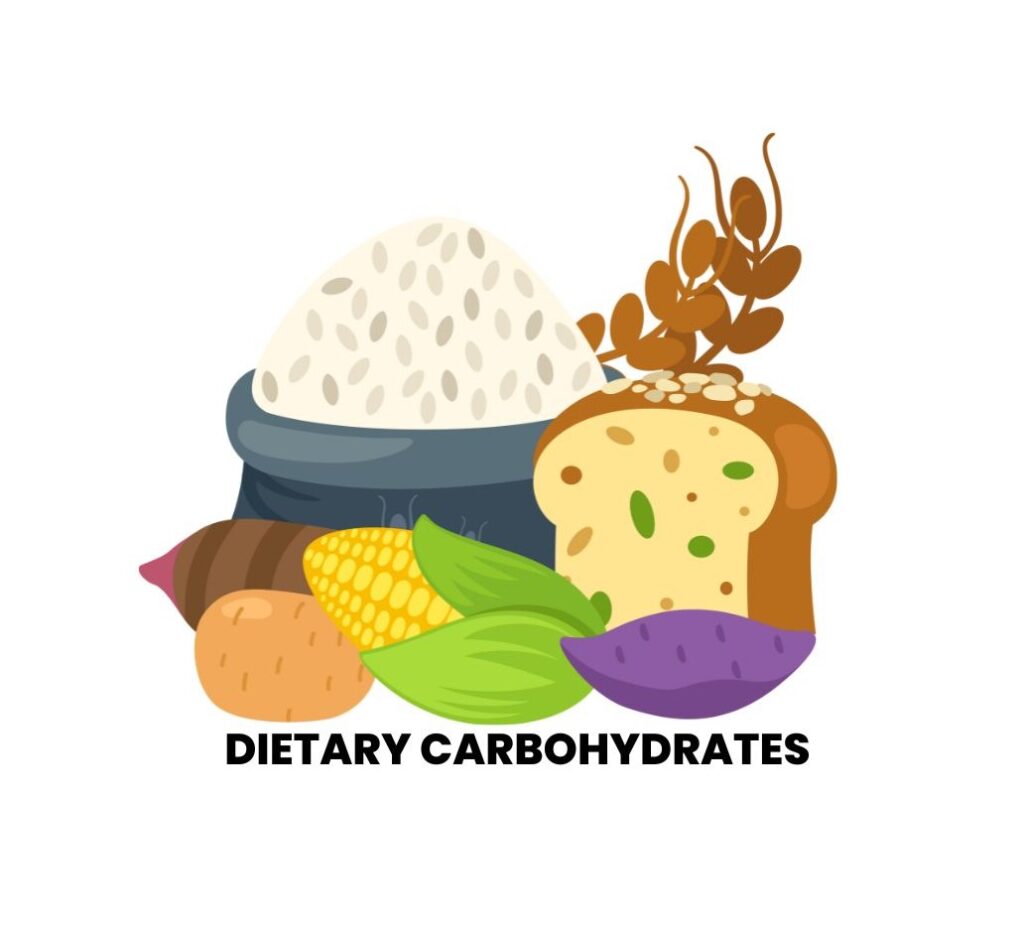
Welcome to the world of carbohydrates – the energy-packed compounds that fuel our bodies and play crucial roles in various biological processes.
From being the primary source of energy to contributing to structural components and immune function, carbohydrates are dietary essentials.
Table of Contents
ToggleHISTORICAL INSIGHTS
Carbohydrates have fascinated scientists for centuries.
In the early 19th century, chemists like Emil Fischer made groundbreaking discoveries, unveiling the complex structures of sugars, and earning Fischer the Nobel Prize in Chemistry in 1902.
These pioneers laid the foundation for understanding the chemistry and functions of carbohydrates, shaping our knowledge today.
DIETARY CARBOHYDRATES
Carbohydrates are organic compounds composed of carbon, hydrogen, and oxygen atoms. They are one of the three main macronutrients, along with proteins and fats, and they play a crucial role in providing energy for the body.
Amount in Diet
- Carbohydrates make up 50–60% of our daily diet, ranging from 250–850 g/day.
Sources of carbohydrates
Found in both animal and plant tissues, carbohydrates are widely distributed.
- Grains: Rice, wheat, oats, and other grains.
- Fruits: Apples, bananas, oranges, and various berries.
- Vegetables: Potatoes, carrots, broccoli, and leafy greens.
- Legumes: Beans, lentils, and peas.
- Dairy: Milk and yogurt.
- Sweets: Candies, pastries, and desserts.
Chemical Composition of carbohydrates
- Carbohydrates consist of carbon, hydrogen, and oxygen.
- Many simple carbohydrates have the empirical formula [CH2O]n.
- This chemical makeup gives them the name “carbohydrate” – hydrated carbon.
Alternative Term
- In simpler terms, carbohydrates are also known as “saccharides.”
- The word saccharides come from the Greek term “saccharon,” which means sugar.
FUNCTIONS OF CARBOHYDRATES
Carbohydrates have a wide range of functions. The following are few of them:
- Energy Source
- Carbohydrates, such as glucose, serve as a primary source of energy for living beings.
- Storage of Energy
- Animals store energy as glycogen, while plants store it as starch, acting as reservoirs for future energy needs.
- Structural Components
- Carbohydrates contribute to the structure of various substances:
- In humans, glycosaminoglycans.
- In plants, cellulose.
- In insects, chitin.
- Carbohydrates contribute to the structure of various substances:
- Dietary Fiber
- Non-digestible carbohydrates, like cellulose, function as dietary fibres, aiding digestion and promoting gut health.
- Nucleic Acid Building Blocks
- Carbohydrates are essential components of nucleic acids (RNA and DNA), with sugars like ribose and deoxyribose playing key roles.
- Roles in Lubrication and Intercommunication
- Carbohydrates contribute to lubrication processes and cellular intercommunication, facilitating smooth interactions between cells.
- Immune Function and Detoxification
- Carbohydrates play a vital role in immune responses and detoxification processes, exemplified by substances like glucuronic acid.
CLASSIFICATION OF CARBOHYDRATES
Carbohydrates are classified into three groups:
1.Monosaccharides
2.Oligosaccharides
3.Polysaccharides
1. Monosaccharides (Greek: Mono = one)
- Also known as simple sugars.
- Soluble in water and sweet to taste.
- Common monosaccharides in the human diet are glucose and fructose.
- Other dietary carbohydrates include alcohol, lactic acid, pyruvic acid, pectins, dextrins, and certain carbohydrates found in meat.
2. Oligosaccharides (Greek: Oligo = few)
- Consist of a short chain of monosaccharide units (2 to 10 units).
- Joined together by glycosidic bonds.
- Upon hydrolysis, yield two to ten molecules of simple sugar (monosaccharide) units.
- Disaccharides, the most abundant oligosaccharides in nature, include:
- Sucrose (glucose + fructose), also known as table sugar.
- Lactose (glucose + galactose), also called milk sugar.
- Maltose (glucose + glucose), found in germinating seeds as a product of starch hydrolysis.
3. Polysaccharides (Greek: Poly = many) or Glycans
- Polymers consisting of hundreds or thousands of monosaccharide units.
- Referred to as complex carbohydrates.
- May be linear (e.g., cellulose) or branched (e.g., glycogen) in structure.
- Present in various forms:
- Starch: the carbohydrate reserve of plants.
- Glycogen: often called animal starch, found in non-vegetarian diets, with mostly long-chain glucose molecules at branching points.
- Cellulose: a plant polysaccharide found in large amounts in the diet, but indigestible by humans due to the lack of digestive enzymes in the gastrointestinal tract.
FREQUENTLY ASKED QUESTIONS
Q1: Why are carbohydrates important in our diet?
A1: Carbohydrates provide a significant portion of our daily energy needs, supporting bodily functions and activities.
They also contribute to structural components and various essential processes.
Q2: What are the main sources of carbohydrates?
A2: Carbohydrates are abundant in grains (rice, wheat), fruits (apples, bananas), vegetables (potatoes, broccoli), legumes (beans, lentils), dairy (milk, yogurt), and sweets (candies, pastries).
Q3: How do carbohydrates function in our bodies?
A3: Carbohydrates serve as a primary energy source, store energy for future use (as glycogen or starch), contribute to structural components, act as dietary fiber for digestion, and play roles in nucleic acids, lubrication, intercommunication, immune function, and detoxification.
Q4: What is the significance of the classification of carbohydrates?
A4: The classification into monosaccharides, oligosaccharides, and polysaccharides helps us understand the diverse structures and functions of carbohydrates.
Monosaccharides are simple sugars, oligosaccharides are short chains, and polysaccharides are large polymers with various roles in different biological processes.
In exploring carbohydrates, we delve into a world where the simple sugars we consume daily contribute to the intricate workings of our bodies.
Understanding their functions and classifications opens a gateway to appreciating the role these compounds play in our overall health and well-being.
